Smeg SFA4395MCX User Manual

Contents
1 |
Instructions |
4 |
|
|
1.1 |
General safety instructions |
4 |
|
1.2 |
Instructions for using microwaves |
5 |
|
1.3 |
Manufacturer liability |
7 |
|
1.4 |
Appliance purpose |
7 |
|
1.5 |
Identification plate |
7 |
|
1.6 |
Disposal |
7 |
|
1.7 |
This user manual |
8 |
|
1.8 |
How to read the user manual |
8 |
2 Description |
9 |
||
|
2.1 |
General Description |
9 |
|
2.2 |
Control panel |
10 |
|
2.3 |
Other parts |
11 |
|
2.4 |
Microwaves |
11 |
|
2.5 |
Available accessories |
12 |
3 Use |
|
13 |
|
|
3.1 |
Instructions |
13 |
|
3.2 |
First use |
15 |
|
3.3 |
Using the accessories |
15 |
|
3.4 |
Using the oven |
16 |
|
3.5 |
Special functions |
29 |
|
3.6 |
Personal recipes |
42 |
|
3.7 |
Settings |
47 |
4 Cleaning and maintenance |
52 |
||
|
4.1 |
Instructions |
52 |
|
4.2 |
Cleaning the surfaces |
52 |
|
4.3 |
Ordinary daily cleaning |
52 |
|
4.4 |
Food stains or residues |
53 |
|
4.5 |
Drying |
53 |
|
4.6 |
Cleaning the door glazing |
53 |
|
4.7 |
Cleaning the inside of the oven |
53 |
|
4.8 |
Vapour Clean |
55 |
5 |
Installation |
58 |
|
|
5.1 |
Electrical connection |
58 |
|
5.2 |
Cable replacement |
58 |
|
5.3 |
Positioning |
59 |
We advise you to read this manual carefully, which contains all the instructions for maintaining the appliance’s aesthetic and functional qualities.
For further information on the product: www.smeg.com
EN
3

Instructions
1 Instructions
IMPORTANT SAFETY INSTRUCTIONS
PLEASE READ CAREFULLY AND RETAIN FOR FUTURE USE.
1.1 General safety instructions
Risk of personal injury
•WARNING: If the door or the door seal is damaged, the oven must not be used until it has been repaired by authorised persons.
•WARNING: It is hazardous for anyone other than a competent person to carry out any service or repair operation which involves the removal of a cover which offers protection against exposure to microwave energy.
•WARNING: Liquids and other foods must not be heated in sealed containers since they are liable to explode.
•WARNING: During use the appliance and its accessible parts become very hot.
•Never touch the heating elements during use.
•Keep children under eight years of age at a safe distance if they are not constantly supervised.
•This appliance may be used by children aged at least 8 and by
4
people of reduced physical or mental capacity, or lacking in experience in the use of electrical appliances, as long as they are supervised or instructed by adults who are responsible for their safety.
•Children must never play with the appliance.
•The appliance must never be cleaned by unsupervised children.
•Switch off the appliance immediately after use.
•If smoke is emitted, switch off or unplug the appliance and keep the door closed in order to stifle any flames.
•Never attempt to extinguish a flame or fire with water.
•Have authorised persons carry out installation and assistance interventions according to the standards in force.
•Do not modify this appliance.
•Do not insert pointed metal objects (cutlery or utensils) into the slots in the appliance.
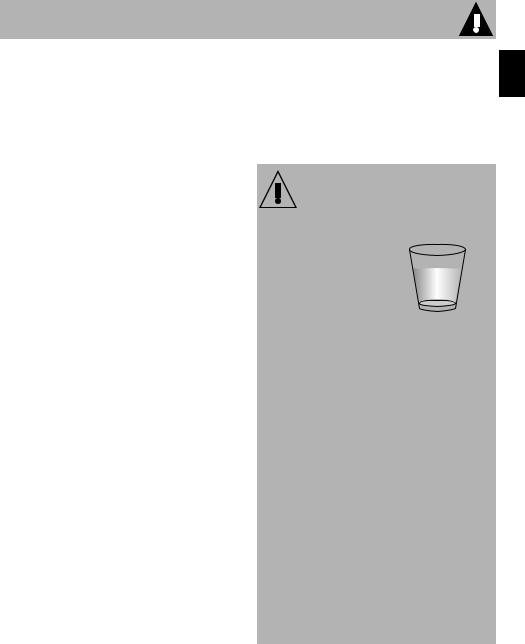
Instructions
•Do not try to repair the appliance yourself or without the intervention of authorised persons.
•If the power supply cable is damaged, contact technical support immediately and they will replace it.
Risk of damaging the appliance
•Do not use abrasive or corrosive detergents on glass parts (e.g. powder products, stain removers and metallic sponges).
•Use wooden or plastic utensils.
•Do not use steam jets to clean the appliance.
•Do not obstruct ventilation openings and heat dispersal slots.
•Never leave the appliance unattended during cooking operations where fats or oils could be released.
•Do not use the appliance to heat rooms for any reason.
•Do not rest any weight or sit on the open door of the appliance.
•Take care that no objects are stuck in the doors.
1.2 Instructions for using |
EN |
microwaves |
• Check the appliance visually during the cooking of foods in plastic or paper containers.
Improper use
Danger of explosion
•When using the microwave to heat or reheat liquids, the boiling process may be delayed – boiling temperature can be reached without the formation of the usual "rolling boil". This delayed boiling and consequent superheating of the liquid can generate an explosion inside the appliance, or sudden boiling over of the superheated liquid can occur when removing the container from the appliance. To avoid these dangers, it is necessary to insert the supplied boiling rod (or a heat-resistant plastic spoon) in the container while heating.
•Use the microwave only for the preparation of food for consumption. Other types of applications are strictly forbidden
5

Instructions
(e.g. drying clothes, warming slippers, sponges, wet cloths or the like, dehydrating foods) because they can lead to the risk of injury or fire.
•Clean the appliance constantly and remove any food residue.
•Do not use the microwave to dry food.
•Do not use the microwave to heat oils or fry.
•Do not use the appliance to heat foods or beverages containing alcohol.
•Baby food should not be heated in sealed containers. Remove the cover or the teat (in the case of baby bottles). Always check the preparation's temperature once heating has completed, it should not be too high. For an even temperature and to avoid scalding stir or shake the contents.
•Do not heat eggs in their shells or whole hard boiled eggs; they may explode even after the heating process has completed.
•Before cooking food with a hard skin or peel (e.g. potatoes, apples, etc.) it is necessary to puncture the skin.
6
•Do not heat food contained within food packages.
•Do not use the microwave functions when the oven is empty.
•Use cookware and utensils that are suitable for use in a microwave oven.
•Do not use aluminium containers to cook food.
•Do not use dishes with metallic decorations (gold-plated or silver).
•The appliance operates in the 2.4GHz ISM band.
•In compliance with the provisions relating to electromagnetic compatibility the appliance belongs to group 2 and class B (EN 55011).
•This appliance complies with the standards and directives currently in force concerning safety and electromagnetic compatibility. It is however recommended for pacemaker wearers to maintain a minimum distance of 20-30cm between the microwave when it is operating and the pacemaker. Consult the pacemaker manufacturer for more information.

Instructions
1.3 Manufacturer liability
The manufacturer declines all liability for damage to persons or property caused by:
•Use of the appliance other than the one envisaged;
•Non-observance of the user manual provisions;
•Tampering with any part of the appliance;
•Use of non-original spare parts.
1.4 Appliance purpose
•This appliance is intended for cooking food in the home environment. Every other use is considered inappropriate. Moreover, it cannot be used:
•in employee kitchens, shops, offices and other working environments.
•in farms/agritourism establishments.
•by guests in hotels, motels and residential environments.
•in bed and breakfast establishments.
•The appliance is not designed to operate with external timers or with remote-control systems.
1.5 Identification plate
The identification plate bears the technical data, serial number and brand name of the appliance. Do not remove the identification plate for any reason.
1.6 Disposal
|
|
|
|
This appliance must be disposed of |
EN |
|
|
|
|
separately from other waste |
|
|
|
|
|
(Directives 2002/95/EC, 2002/ |
|
|
|
|
|
|
|
96/EC, 2003/108/EC). The appliance |
|
||||
does not contain substances in quantities |
|
||||
sufficient to be considered hazardous to |
|
||||
health and the environment, in accordance |
|
||||
with current European directives. |
|
||||
|
|
|
|
Power voltage |
|
|
|
|
|
Danger of electrocution |
|
•Disconnect the main power supply.
•Disconnect the power cable from the electrical system.
To dispose of the appliance:
•Cut the power supply cable and remove it along with the plug (if present).
•Deliver the appliance to the appropriate recycling centre for electrical and electronic equipment waste, or return it to the retailer when purchasing an equivalent product, on a one for one basis.
Our appliances are packed in nonpolluting and recyclable materials.
• Deliver the packing materials to the appropriate recycling centre.
Plastic packaging
Danger of suffocation
•Do not leave the packaging or any part of it unattended.
•Do not let children play with the packaging plastic bags.
7
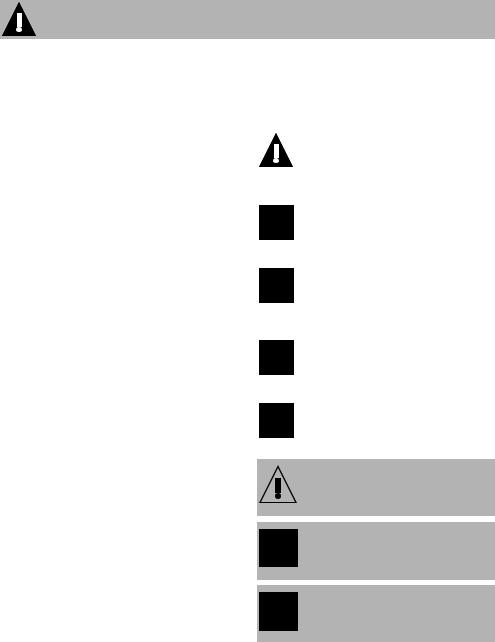
Instructions
1.7 This user manual
This user manual is an integral part of the appliance and must therefore be kept in its entirety and within the user’s reach for the whole working life of the appliance.
• Read this user manual carefully before using the appliance.
1.8 How to read the user manual
This user manual uses the following reading conventions:
Instructions
General information on this user manual, on safety and final disposal.
Description
Description of the appliance and its accessories.
Use
Information on the use of the  appliance and its accessories,
appliance and its accessories,
cooking advice.
Cleaning and maintenance
Information for proper cleaning and maintenance of the appliance.
Installation
Information for authorised persons: Installation, operation and inspection.
Safety instructions
Information
Advice
1. Sequence of instructions for use.
• Standalone instruction.
8
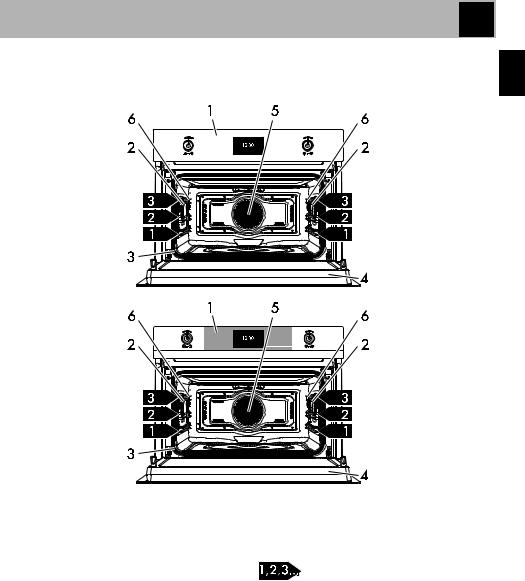
Description
2 Description
2.1 General Description
EN
1 |
Control panel |
4 |
Door |
2 |
LH light |
5 |
Oven fan |
3 |
Seal |
6 |
Rack/tray support frames |
|
|
|
Frame shelf |
9

Description
2.2 Control panel
1 Return knob
Using this knob you can return to the appliance's previous menu item. It also lets you manually turn the oven light on and off.
2 Display
Displays the current time, the cooking parameters, and all the appliance’s functions.
3 Control knob
This knob allows you to turn the appliance on and off and select the various available functions.
Turn the knob right or left to change/select the required item. Press to confirm.
Keep the knob pressed in for at least 5 seconds to immediately complete any cooking program.
10

Description
2.3 Other parts
Shelves
The appliance features shelves to position trays and racks at different heights. The insertion heights are indicated from the bottom upwards (see 2.1 General Description).
Cooling fan
The fan cools the oven and comes into operation during cooking.
The fan causes a steady outflow of air from above the door which may continue for a brief period of time even after the appliance has been turned off.
Interior lighting
The appliance’s interior lighting comes on:
• |
When the door is opened |
|
|
• |
When any function is selected, apart |
||
|
from the Sabbath mode |
and the |
|
|
Vapour Clean |
function. |
|
• Turning the return knob to the right or left when no function is selected (turn the temperature knob to the right or left again to switch off the internal lighting).
In order to save energy, the light turns off after a minute at the start of cooking (this function can be deactivated via the secondary menu).
2.4 Microwaves
The appliance is equipped with a microwave generator called a magnetron. The microwaves generated are evenly emitted into the oven cavity in order to reach the food and heat it.
Heating takes place through the process of friction between the molecules contained within the food (mainly water molecules), with the consequent generation of heat. The heat generated directly inside the food leads to defrosting, re-heating or cooking in a shorter length of time compared to traditional cooking.
The use of suitable containers for microwave cooking allows the microwaves to reach the food in a uniform manner (see Materials suitable for microwaves).
EN
11

Description
2.5 Available accessories |
Tray rack |
Some models are not provided with all accessories.
Rack
To be placed over the top of the oven tray; for cooking foods which may drip.
Boiling rod
Useful for supporting containers with food during cooking.
Glass dish
Useful for any type of cooking and collecting fat from foods resting on the rack above.
To be placed in containers when heating liquids, necessary to avoid delayed boiling with resulting superheating.
The oven accessories intended to come into contact with food are made of materials that comply with the provisions of current legislation.
Original supplied and optional accessories can be requested to Authorised Assistance Centres. Use only original accessories supplied by the manufacturer.
12

Use
3 Use
3.1 Instructions
High temperature inside the oven during use
Danger of burns
•Keep the oven door closed during cooking.
•Protect your hands wearing heat resistant gloves when moving food inside the oven.
•Do not touch the heating elements inside the oven.
•Do not pour water directly onto very hot trays.
•Do not allow children to get near the oven when it is in operation.
High temperature inside the oven during use
Danger of fire or explosion
•Do not spray any spray products near the oven.
•Do not use or leave flammable materials near the oven.
•Do not use plastic kitchenware for cooking food (except with the microwave function).
•Do not put sealed tins or containers in the oven.
•Do not leave the oven unattended during cooking operations where fats or oils could be released.
•Remove all trays and racks which are not required during cooking.
Improper use
Risk of damage to enamelled surfaces
•Do not cover the bottom of the oven cavity with aluminium or tin foil sheets.
•If you wish to use greaseproof paper, place it so that it will not interfere with the hot air circulation inside the oven.
•Do not bang or drag cookware over the glazed bottom of the oven compartment.
•Do not pour water directly onto very hot trays.
EN
13
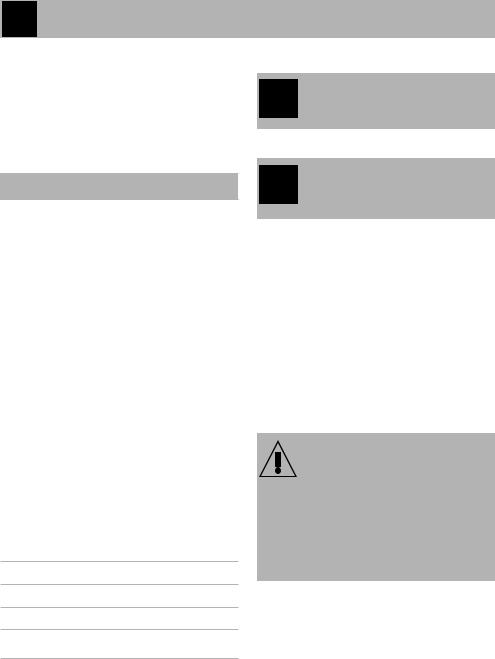
Use
Materials suitable for microwaves
In general, in order for all of the food to be reached, the materials used for microwave cooking must be transparent to microwave energy.
Below is a table of materials to use and those not to use:
MATERIALS TO USE
Glass*
• Baking ware |
Always remove the |
• Glasses |
covers. |
•Glass jars |
|
Porcelain |
|
|
|
Ceramic |
|
|
|
Plastic* |
Only where suitable |
• Containers |
for microwave use. |
• Plastic wrap |
Where film is used it |
|
must not come into |
|
contact with the |
|
food. |
*only if heat-resistant |
|
|
|
NOT TO BE USED |
|
|
|
Metal |
|
• Aluminium foil |
|
• Aluminium trays |
These can lead to |
• Plates |
arcing or sparks. |
•Metal utensils
•Freezer bags tie wraps
Wood
Crystal glasses
Paper |
Risk of fire. |
Expanded polystyrene Risk of food containers contamination.
*only if heat-resistant
Dishes must be free of metal decorations.
Testing dishes
The microwave function can be used without any food inside the oven only for this test.
To check whether or not cookware is suitable for use with microwave cooking carry out this simple test:
1.Remove all accessories from the oven cavity.
2.Place the cookware to be tested into the oven compartment.
3.Select the maximum power level (e.g. 1000W).
4.Set a cooking time of 30 seconds.
5.Start cooking.
Unsuitable cookware
Risk of damage to the appliance
• If there is crackling or if sparks are emitted from the cookware then immediately terminate the test. In this instance the cookware is not suitable for microwave cooking.
6.At the end of the test the cookware must be either cold or slightly warm. If the cookware is hot then it should be considered as unsuitable for microwave use.
14

Use
3.2 First use
1.Remove any protective film from the outside or inside of the appliance, including accessories.
2.Remove any labels (apart from the technical data plate) from the accessories and from the oven cavity.
3.Remove and wash all the appliance accessories (see 4 Cleaning and maintenance).
4.Heat the empty oven at maximum temperature (using the traditional functions) so as to remove any manufacturing residues.
For the first reheating use a traditional function and not a microwave function.
3.3 Using the accessories
Racks and trays
Racks and trays have to be inserted into the side guides until they come to a complete stop.
•The mechanical safety locks that prevent the rack from being taken out accidentally have to face downwards and towards the oven back.
EN
High temperature
Danger of burns
• When using any of the microwave functions the rack can become very hot. Use heat-resistant gloves for handling.
Gently insert racks and trays into the oven until they come to a stop.
Clean the trays before using them for the first time to remove any residues left by the manufacturing process.
Tray rack
The tray rack has to be inserted into the tray. In this way fat can be collected separately from the food which is being cooked.
15
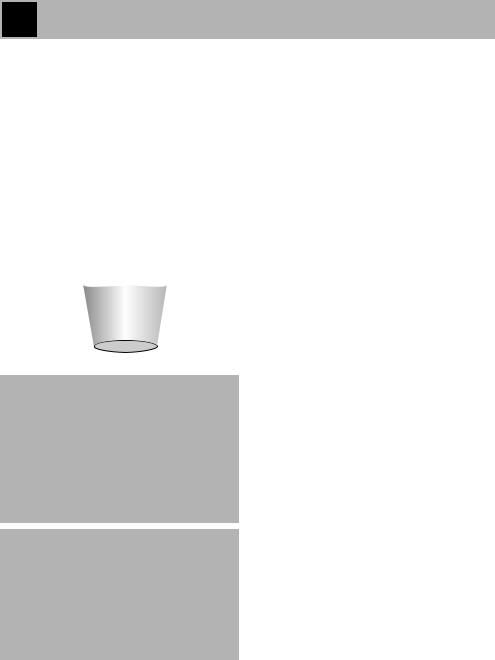
Use
Boiling rod
When using the microwave to heat or reheat liquids, the boiling process may be delayed while the liquids nevertheless exceed 100 degrees. To avoid this dangerous phenomenon, it is necessary to insert the supplied boiling rod (or a heatresistant plastic spoon) in the container while heating.
Improper use
Danger of explosion/burns
• To avoid the danger of explosion inside the appliance or the sudden boiling over of superheated liquids, it is always necessary to immerse the boiling rod in the liquid being heated.
High temperature
Risk of damage to the accessory
• Use the boiling rod only with Microwave functions. The rod must not be used with combined and traditional functions.
3.4 Using the oven
First use
On the first use, or after a power failure,
 will be flashing on the appliance's display. In order to be able to start any cooking program, the current time must be set (if the oven is being turned on for the first time, it is also recommended you set the required language).
will be flashing on the appliance's display. In order to be able to start any cooking program, the current time must be set (if the oven is being turned on for the first time, it is also recommended you set the required language).
Press the control knob to enter the settings menu.
The appliance language is set to “English” by default.
When first connecting or after the power has been cut for a time it will be necessary to wait a few seconds before you can interact with the appliance.
16
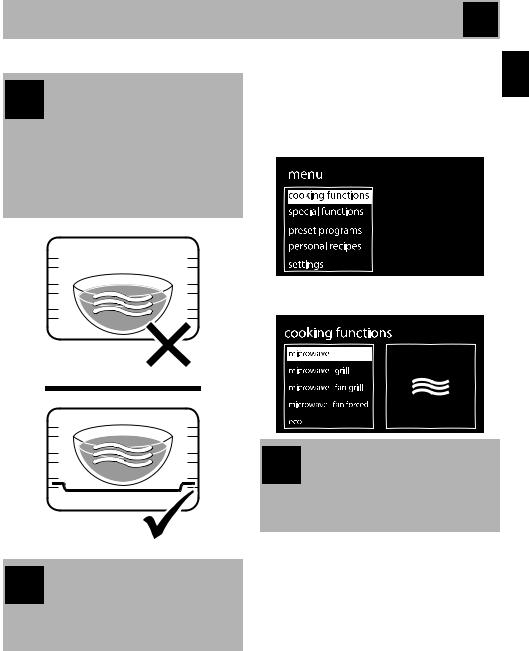
Use
Microwave functions
For microwave cooking, the food must be placed in a container resting on the rack inserted in the first runner.
IT IS NOT RECOMMENDED TO COOK FOOD IN A CONTAINER RESTING ON THE BOTTOM OF THE OVEN.
For perfect results with long microwave and combination cooking functions, food should be stirred once or twice during cooking.
1.Press the control knob to activate the appliance.
2.From the main menu, turn the control knob to select “cooking functions”.
3.Select “cooking functions” from the menu by pressing the control knob.
4.Turn the control knob to select the required function.
When cooking using only the microwave function, the appliance does not perform preheating. The food can be placed immediately inside the appliance.
EN
17

Use
5.Press the control knob to confirm the selection.
6.Turn the control knob to modify the cooking duration.
7.Press to confirm the set cooking duration.
8.Turn the control knob to change the microwave power level (from 100W to 1000W).
10. Press the control knob again to start microwave cooking.
11. At the end of the cooking cycle, “microwave function ended” appears on the display and a buzzer will sound that can be deactivated by pressing the control knob.
9. Press to confirm the set cooking duration.
18

Use
Microwave power levels
Below is a list of the power levels that can be selected:
Power (W) |
Useful for |
|
|
|
|
100 |
|
|
200 |
Defrosting food |
|
300 |
|
|
400 |
Cooking meat or delicate |
|
500 |
cooking |
|
600 |
Re-heating and cooking |
|
700 |
||
food |
||
800 |
||
|
||
|
|
|
900 |
Heating liquids |
|
1000 |
||
|
||
|
|
QUICK START microwave function
The QUICK START function allows the microwave to be started quickly. This is useful for heating small quantities of liquid or food.
1.Press the return knob with the appliance in stand-by.
2.Press the control knob to confirm the QUICK START function.
The appliance will start the microwave oven with the default settings.
Combined functions
Combination cooking is a mix of traditional cooking and microwave operation.
Combination functions list
Improper use
Risk of damage to the appliance
• Do not use the combined functions to heat or boil liquids.
Microwave + Grill
 The use of the grill results in perfect browning of the food’s surface. Using the microwave on the other hand leads to rapid internal cooking of the food.
The use of the grill results in perfect browning of the food’s surface. Using the microwave on the other hand leads to rapid internal cooking of the food.
 Microwave + Static + fan
Microwave + Static + fan
 The operation of the fan, combined with traditional cooking, ensures consistent cooking even with complex recipes. Using the microwave on the other hand leads to rapid internal cooking of the food.
The operation of the fan, combined with traditional cooking, ensures consistent cooking even with complex recipes. Using the microwave on the other hand leads to rapid internal cooking of the food.
Microwave + Fan forced
For combination cooking of food in a short time thanks to the microwave action working together with hot air circulation.
EN
19

Use
1.Press the control knob to activate the appliance.
2.From the main menu, turn the control knob to select “cooking functions”.
3.Press the control knob to confirm the selection.
4.Turn the control knob to select a “combined” function.
5.Press the control knob to confirm the selected function. The display shows the screen for setting the parameters of the selected combined function.
With the combination Microwave+Grill function, given the type of cooking and in order to cook more quickly preheating is not performed.
6.Turn the control knob to modify the cooking temperature.
7.Press the control knob to confirm the cooking temperature set (for example 200°C).
8.Turn the control knob to modify the cooking duration.
9.Press the control knob to confirm the cooking time set (for example 15 minutes).
10. Turn the control knob to change the microwave power level (from 100W to 700W).
20
